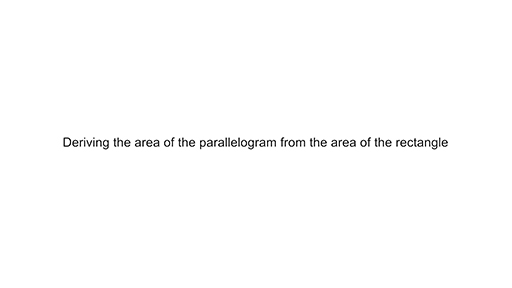Using the area formula for a rectangle to derive other area formulas
The area formulas for parallelograms and triangles can be easily derived from the area formula of a rectangle (see Video 1).
Watch this video to see how the area formula of a rectangle can be used to derive the area of a parallelogram and then a triangle.

Transcript: Video 1 Deriving the area of a parallelogram and the area of a triangle
Since the parallelogram has been made by moving parts of the original rectangle without losing anything, the area of the parallelogram must be the same as the area of the rectangle.
It is worth bearing in mind that if the area formulas are promoted too quickly, before learners have conceptualised area as being a measure of the inside of a shape, then area measurement becomes a calculation without reference to the geometric situation.
